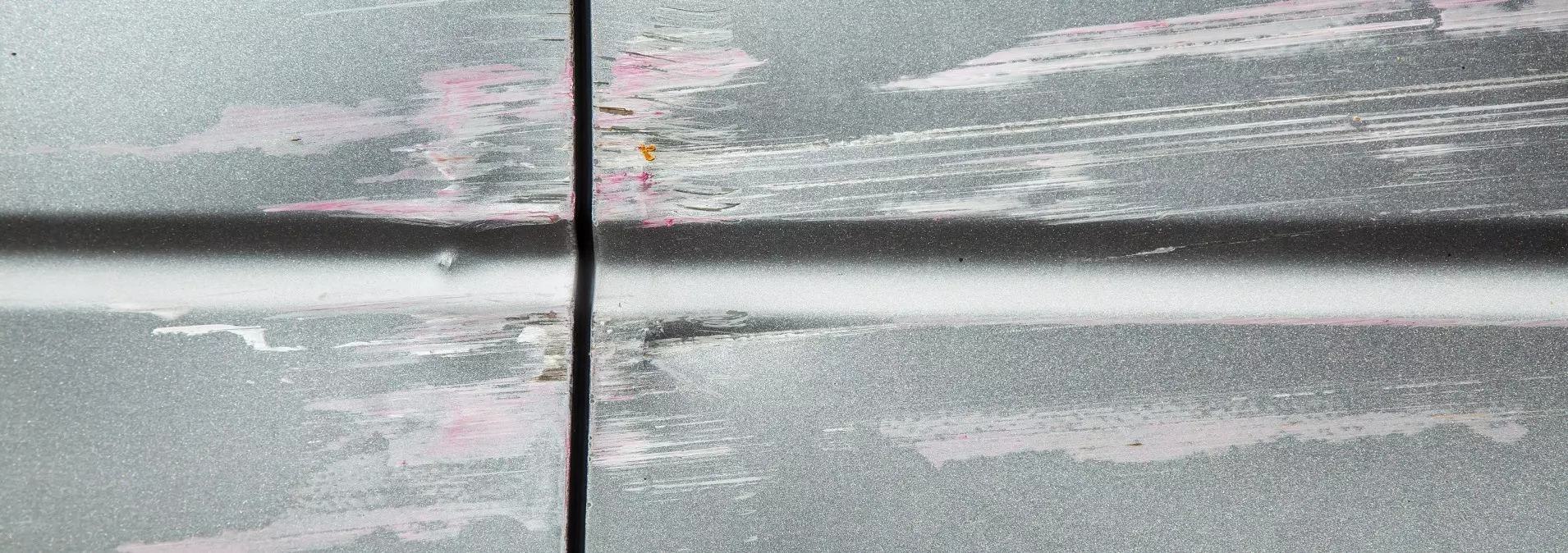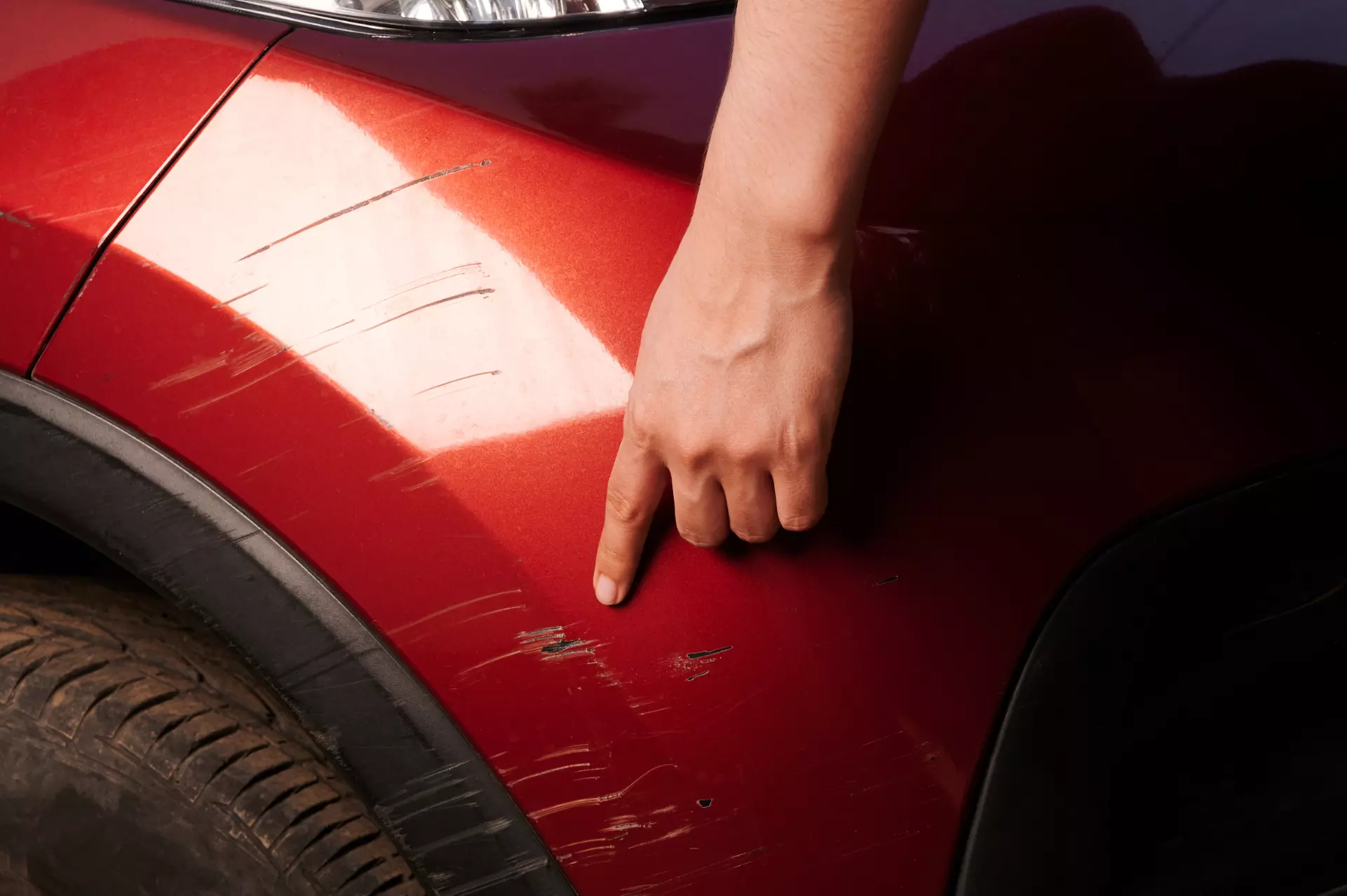What Causes Vehicle Paint to Fade? Read more about Car and Van Spraying for commercial vehicles and the reasons that vehicle paint needs to be resprayed.
What Causes Faded Car and Van Paint?
It is primarily understood in the vehicle repair industry that fading car paint can be caused by numerous factors such as excessive exposure to UV rays from the sunlight, frequent car washing, contaminants and several other sources.
However, various other items may contribute to the paint of your vehicle fading. Here we will outline some of the most common factors that can cause damage to your car's exterior bodywork or paint job.
We can recommend various tips on how to be more careful to reduce and restore any potential paint deterioration in the future, alongside a few of our favourite products that you may wish to use to extend the shine and durability of the paint's colour on your vehicle. Maintenance is key to ensuring that your car is always in perfect condition.
Road Salt
Those that live by the ocean or in various cold weather climates, during wintertime, etc., understand that there are multiple adverse effects that salt can have on their vehicle's and related equipment.
Whether it causes rust on your undercarriage, exhaust pipes, body panels or motor mounts, salt in the air can do more damage to your exposed equipment than you may believe.
NaCl, or sodium chloride, is exceptionally corrosive, even if it is not a base or an acid. When salt is left on a surface, real issues occur, especially when it is coupled with UV light rays.
As it heats up, the salt crystals eat away at the clear coating, much like UV rays do and eventually sink through the paint surface when they slip through and sit upon the bare metal and could quickly create rust on your vehicle bodywork.
Sunlight
Many paint oxidation sources that many seem to look past or ignore are direct sunlight and UV rays. The combination of heat from the UV rays and oxygen is how oxidation is produced.
As UV light constantly blazes against the clear coat of your car's bodywork, it can gradually penetrate through the coating, heating the paint and causing it to either lift or fade. When oxygen is introduced to under-layers, the metal absorbs the heat and creates a faded effect.
Lack of Proper Care
The way you take care of your vehicle can contribute to how well your paintwork survives on your bodywork, whether it fades or glimmers for many months and years on end. Those who wax and wash their vehicle more routinely have a better chance of having a sustainable surface for their car.
On the other hand, you may be using an abrasive product to wash or polish your vehicle that creates a dull appearance on the bodywork, ensuring you are always using products that suit car surfaces.
Bird Droppings
Bird droppings are incredibly acidic, and the acids in their waste can eat away at all the car paintwork on the surface, especially if they are left there for long periods.
Act immediately if you notice bird droppings on your bodywork. The best option to do is grab a wet towel and detergent. Do not scrub; gently clean the area; you don't want to risk scratching your car.
Type of Paint
Your vehicle can sometimes be more susceptible to fading, depending on the type of paints applied during the making of the car. Single-stage paint mixes the colour and clear coat. That way, you have a higher chance of your vehicle paint fading.
However, dual-stage paint systems have both a base coat and a clear coat applied separately. Such provides intense UV protection and ensures it cannot fade as easy.
How to Prevent Car Paint from Fading

Park in a Covered Area
Whenever possible, try to park your car in a covered area, especially in harsh weather or hot weather. As mentioned beforehand, the UV from the sun's rays can be highly damaging to your car's paintwork, so finding parking covered with shelter, in a garage, carport, under a tree, etc., is the best option to do if you are worried about your bodywork.
If you choose to park under a tree, beware of bird droppings, as they can damage your paintwork too.
.jpg)
Wax After Washing
Waxing creates an excellent layer of high-quality protection for your cars paintwork, alongside assisting the appearance of your vehicle by making it look stunning and shiny, mainly when you apply it after a wash.
There are numerous car waxes to choose from for your vehicle, such as liquids, sprays, pastes and wipe on/wipe offs. It doesn't matter what protective formula you buy, always be aware of the product's directions and follow them closely.
It's best to wax your car every three or so months as it helps it extend the durability and longevity of the paintwork. In addition, it is vital for those that live in cold climates or near the ocean, as the added layer will protect your entire car.
Wash Your Vehicle Regularly
One of the best things you can do to protect your bodywork and paintwork from the elements and other causes of damage is to stick to a regular wash schedule. Car owners who refuse to wash their vehicle frequently will not only have a grubby car, but you are more likely to accumulate micro-dirt particles that can seep into the paint coating and ruin the cars finish.
Every so often, i.e., every few weeks, run your car through the car wash, cleaners or wash your car yourself practically. However, if you choose to take a DIY route when washing your vehicle, ensure you acquire the correct, non-abrasive products that will allow your car or vehicle to glimmer and shine.
Never grab dish soap and a rag from your kitchen cupboards; instead, use a softer cleaner, designed more particularly for automotive paint. It's also best to grab yourself a soft mitt or sponge so that you aren't grazing against the bodywork as you swipe across. You may also wish to use a gentle polish to ensure a gleaming surface.
For cleaning your wheels and tyres, use a range of different sponges to avoid transferring brake dust, debris, sand and other harsh particles to your bodywork, where you risk scratching the paint.
Can You Fix Faded Car Paint?
Fixing all faded car paint depends on the level of damage done to the paintwork. If the faded paint has been caused by the clear coat on the surface being "hazed", then it can be pretty simple to buff out any imperfections and reapply your topcoat. Such is referred to as paint restoration and correction, as you are ironing out faults and just touching it up.
A range of modern trucks of today, such as SUV's and cars, can be sprayed with a single-stage system paint or a dual-stage system paint. Such a method means the paint blends with a clear coating atop or a sprayed on-base paint. Then, it is topped with a transparent layer on the dual.

What if the Car's Paint is Too Damaged?
If you find that your car too damaged or faded for any buffing or spraying process to have a positive effect, the only other natural way to reinforce the shine is to have your vehicle refinished'such refinishing consists of painting the damaged or corroded panels and completely refinishing the whole vehicle or car.
If you find that this is the case, contact a collision repair centre or shop in your area for an accurate paint solution service. Any skilled high-quality repair technician can go through and evaluate the condition of your vehicle and enforce the best plan of action to get it back in superb condition. All services will be cost-efficient, and free quotes are often offered over the phone.
If you manage a commercial fleet, you will eventually need to know: What Causes Vehicle Paint to Fade? When your commercial cars or vans need a re-spray, get in touch. For Commercial vehicles and HGV spray painting in Doncaster and Scunthorpe, follow the link below.
